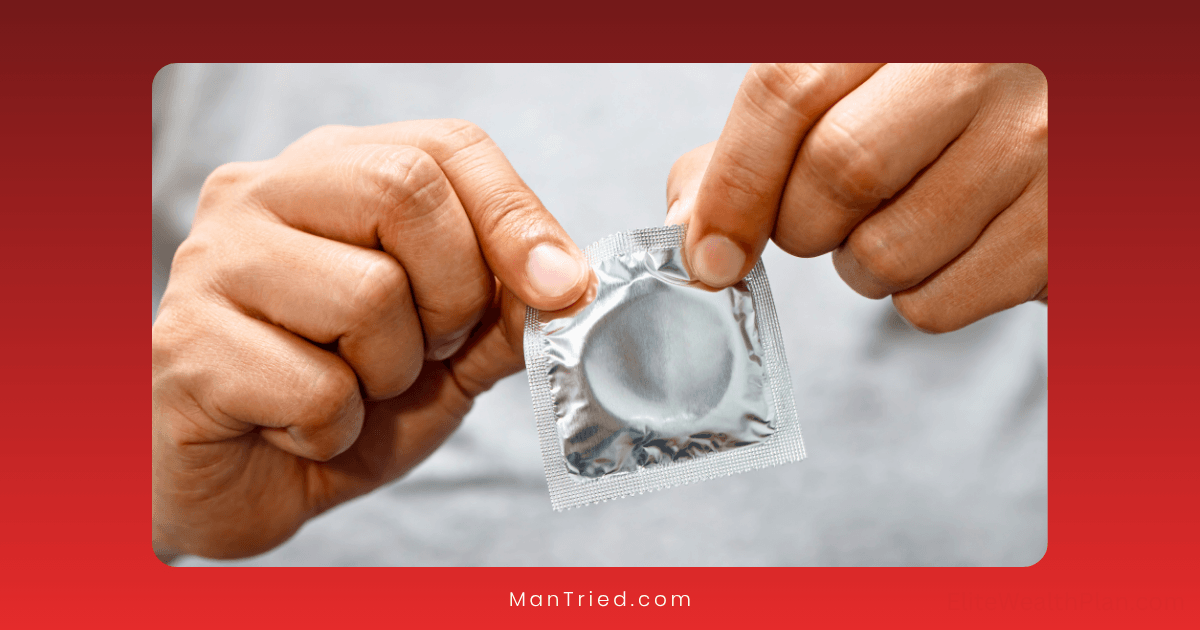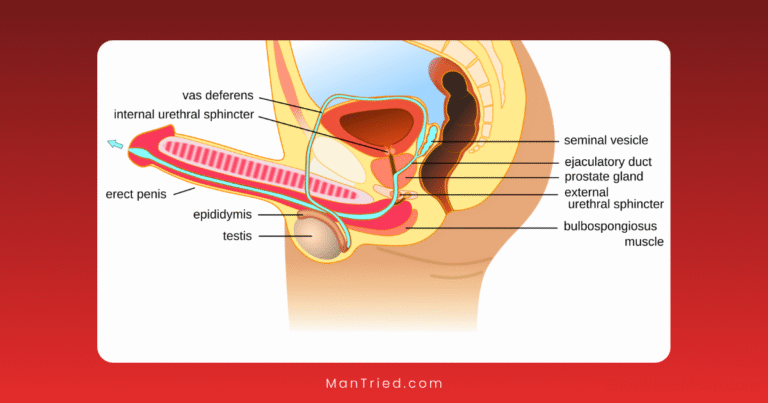Beyond Condoms: The Complete Guide to STI Prevention Methods

When it comes to preventing sexually transmitted infections (STIs), condoms often dominate the conversation. While external (male) condoms remain one of the most accessible and effective prevention tools available, they’re just one option in an expanding toolkit of STI prevention methods. Whether you’re looking for additional protection, alternatives for specific situations, or approaches that align better with your sexual practices, this comprehensive guide will walk you through the full spectrum of STI prevention options available today.
Understanding the STI Prevention Landscape
According to the Centers for Disease Control and Prevention (CDC), there are approximately 26 million new STI cases in the United States each year. Prevention is crucial not only to avoid the immediate discomfort of infections but also to prevent serious long-term health consequences including infertility, certain cancers, and increased vulnerability to HIV.
Effective STI prevention requires a multi-faceted approach that may include:
- Barrier methods
- Biomedical interventions
- Testing and treatment strategies
- Behavioral approaches
- Vaccination
Let’s explore each category in detail.
Barrier Methods: Beyond the External Condom
External (Male) Condoms
The standard external condom remains a cornerstone of STI prevention:
- Effectiveness: When used consistently and correctly, latex condoms reduce HIV transmission risk by 71-80% and offer significant protection against other STIs
- Advantages: Widely available, inexpensive, no prescription needed
- Limitations: Requires consistent use; some people report reduced sensation
Pro tip: For those with latex allergies, polyisoprene and polyurethane condoms offer similar protection levels, though they may be slightly more prone to breakage according to Planned Parenthood.
Internal (Female) Condoms
Often overlooked, internal condoms provide an important alternative:
- Effectiveness: Studies indicate approximately 95% effectiveness against STIs when used correctly
- Advantages: Can be inserted hours before sex; gives receptive partners control over protection; covers more external genital area than external condoms
- Limitations: More expensive; less widely available; may require practice to use comfortably
According to the World Health Organization (WHO), internal condoms are an essential component of comprehensive STI prevention programs, particularly for individuals who may have difficulty negotiating external condom use with partners.
Dental Dams
For oral sex protection, dental dams provide a barrier against STI transmission:
- Effectiveness: While clinical trials are limited, laboratory studies confirm they create an effective barrier
- Advantages: Protects during oral-vaginal or oral-anal contact; available in various flavors
- Limitations: Less commonly used; requires practice; may reduce sensation
DIY option: In a pinch, an external condom can be cut lengthwise to create a makeshift dental dam, though purpose-made dams are preferable for optimal protection.
Finger Cots and Gloves
For manual stimulation, especially with multiple partners:
- Effectiveness: Creates a barrier for fingers/hands, preventing transmission via cuts or broken skin
- Advantages: Inexpensive; useful during menstruation or when anal play is involved
- Limitations: May feel clinical to some users; requires planning
Biomedical Interventions: Pharmaceutical Protection
HIV Pre-Exposure Prophylaxis (PrEP)
PrEP has revolutionized HIV prevention for those at substantial risk:
- Effectiveness: Reduces HIV acquisition risk by up to 99% when taken as prescribed
- Options:
- Daily oral medications (Truvada, Descovy)
- Long-acting injectable (Apretude, administered every 2 months)
- Vaginal ring (Dapivirine ring, replaced monthly)
- Limitations: Doesn’t protect against other STIs; requires regular medical visits; may have side effects
According to a 2023 study in The Lancet HIV, PrEP users who maintain high adherence have HIV protection comparable to or better than consistent condom use. However, the CDC notes that some PrEP users have higher rates of other STIs, highlighting the importance of combining prevention methods.
HIV Post-Exposure Prophylaxis (PEP)
For emergency situations after potential HIV exposure:
- Effectiveness: Highly effective when started within 72 hours of exposure
- Process: 28-day course of antiretroviral medications
- Limitations: Not intended for regular use; must be started quickly; may have side effects
Important: PEP is available through emergency rooms, urgent care centers, and some sexual health clinics. The sooner it’s started, the more effective it is—ideally within 24 hours of exposure.
Doxycycline Post-Exposure Prophylaxis (Doxy-PEP)
An emerging strategy for bacterial STI prevention:
- Effectiveness: Studies show approximately 70% reduction in chlamydia and syphilis incidence among men who have sex with men (MSM) and transgender women
- Process: Single dose (200mg) taken within 72 hours after sex without a condom
- Status: Currently recommended by the CDC for specific high-risk populations
- Limitations: Less effective against gonorrhea; concerns about antimicrobial resistance; not recommended for everyone
Research published in the New England Journal of Medicine in 2023 demonstrated doxy-PEP’s effectiveness, but experts emphasize it should be used selectively and in consultation with healthcare providers.
Vaccination: Preventing STIs Before Exposure
Several vaccines can prevent specific STIs:
HPV Vaccine
- Protects against: Human Papillomavirus strains that cause genital warts and various cancers
- Effectiveness: Nearly 100% effective against targeted HPV types
- Recommendation: Routine vaccination for all genders starting at age 11-12, catch-up vaccination through age 26
- Benefits: Prevents cervical, anal, penile, vaginal, vulvar, and oropharyngeal cancers
According to the American Cancer Society, widespread HPV vaccination could prevent over 90% of cancers caused by HPV—approximately 36,000 cases annually in the United States.
Hepatitis B Vaccine
- Protects against: Hepatitis B virus, which can cause acute and chronic liver disease
- Effectiveness: 95% effective in preventing infection and disease
- Recommendation: Universal vaccination for infants; catch-up vaccination for unvaccinated adults, especially those with multiple sex partners
Hepatitis A Vaccine
- Protects against: Hepatitis A virus, which can cause acute liver disease
- Effectiveness: 95% effective after two doses
- Recommendation: Particularly important for men who have sex with men and people who engage in anal play
Emerging Vaccines
Research is underway for vaccines against:
- Herpes simplex virus (HSV): Several candidates in clinical trials
- Gonorrhea: Early research shows the meningococcal B vaccine may offer some cross-protection
- Chlamydia: Vaccine candidates in development
Testing and Treatment as Prevention
Regular testing and prompt treatment play crucial roles in STI prevention:
Regular Screening
- Recommendation: Sexually active individuals should be tested at least annually; more frequently (every 3-6 months) for those with multiple partners
- Benefit: Early detection allows for prompt treatment before transmission to partners
Partner Notification and Treatment
- Effectiveness: Partner notification services can reduce reinfection rates by 20-30%
- Options: Provider-assisted notification services are available through many public health departments
Treatment as Prevention
- HIV: People living with HIV who maintain an undetectable viral load through antiretroviral therapy cannot transmit the virus sexually (Undetectable = Untransmittable or U=U)
- Bacterial STIs: Prompt treatment prevents transmission to partners and complications
According to UNAIDS, the U=U concept has been transformative in HIV prevention, with studies showing zero linked HIV transmissions when the HIV-positive partner has an undetectable viral load.
Behavioral Approaches
While not a replacement for other methods, behavioral strategies complement physical and biomedical prevention:
Communication and Negotiation
- Effectiveness: Open discussion about STI status and prevention preferences before sexual activity reduces risk
- Approach: Discuss testing history, prevention preferences, and boundaries
Reducing Number of Partners
- Impact: Fewer partners generally means lower STI exposure risk
- Consideration: Quality of protection matters more than quantity of partners
Strategic Positioning and Harm Reduction
- Concept: Some sexual activities carry lower transmission risk than others
- Examples:
- Receptive partners generally have higher risk than insertive partners for many STIs
- Oral sex typically carries lower risk than anal or vaginal sex for most STIs
Combining Methods for Maximum Protection
The most effective approach to STI prevention combines multiple methods. Here are some effective combinations:
For HIV Prevention
- PrEP + condoms: Provides nearly complete HIV protection plus significant protection against other STIs
- Treatment as prevention + condoms: For couples where one partner has HIV
- Regular testing + PEP access: As a backup for condom failures or lapses
For Bacterial STI Prevention
- Condoms + doxy-PEP (for eligible individuals): Provides multiple layers of protection
- Condoms + regular testing: Catches breakthrough infections quickly
- Vaccination + barriers: For comprehensive protection against vaccine-preventable STIs
For Comprehensive Protection
- PrEP + condoms + vaccination + regular testing: The gold standard for sexually active individuals with multiple partners
Special Considerations for Different Sexual Practices
For Oral Sex
- Dental dams or condoms: For oral-genital or oral-anal contact
- Testing focus: Throat swabs for gonorrhea and chlamydia
- Vaccination: HPV and hepatitis vaccines particularly important
For Anal Sex
- Condoms + plenty of lubricant: Reduces risk of condom breakage
- PrEP: Especially important as receptive anal sex carries the highest HIV transmission risk
- Testing focus: Rectal swabs for gonorrhea and chlamydia
For Vaginal Sex
- Barrier methods + biomedical options: Internal or external condoms, potentially combined with PrEP
- Testing focus: Vaginal swabs or urine tests for common STIs
Emerging Technologies and Future Directions
The field of STI prevention continues to evolve:
Multipurpose Prevention Technologies (MPTs)
Products designed to prevent multiple sexual and reproductive health risks simultaneously:
- Vaginal rings: Combining contraception with STI/HIV prevention
- Gels and films: Topical products that protect against multiple STIs
Point-of-Care Testing
Rapid, on-site testing technologies that provide results in minutes rather than days:
- Benefits: Allows for immediate treatment, reducing transmission window
- Status: Increasingly available for HIV, syphilis, and other infections
Overcoming Barriers to Prevention
Several factors can impede effective STI prevention:
Access and Cost
- Insurance coverage: Many prevention methods are covered by insurance; the Affordable Care Act requires coverage for many preventive services
- Public health resources: Health departments and community clinics often provide free or low-cost prevention tools
- Patient assistance programs: Available for higher-cost options like PrEP
Stigma and Education
- Community resources: Organizations like NASTAD and SIECUS provide stigma-free education
- Healthcare provider training: Increasingly focused on non-judgmental, comprehensive sexual health care
Cultural and Religious Considerations
- Culturally appropriate messaging: Prevention education that respects diverse values while providing accurate information
- Harm reduction approach: Meeting people where they are rather than prescribing one-size-fits-all solutions
Conclusion: Creating Your Personal Prevention Plan
The most effective STI prevention strategy is one that works for your specific circumstances, sexual practices, and comfort level. Consider these steps:
- Assess your risk: Consider your sexual practices, number of partners, and local STI prevalence
- Consult a healthcare provider: Discuss which prevention methods are most appropriate for you
- Create redundancy: Use multiple methods for added protection
- Stay informed: Prevention options continue to evolve
- Be flexible: Adjust your approach as your circumstances change
Remember that perfect protection is rarely achievable, but significant risk reduction is within everyone’s reach. By combining appropriate prevention methods and regular testing, you can protect both yourself and your partners while maintaining a fulfilling sexual life.






